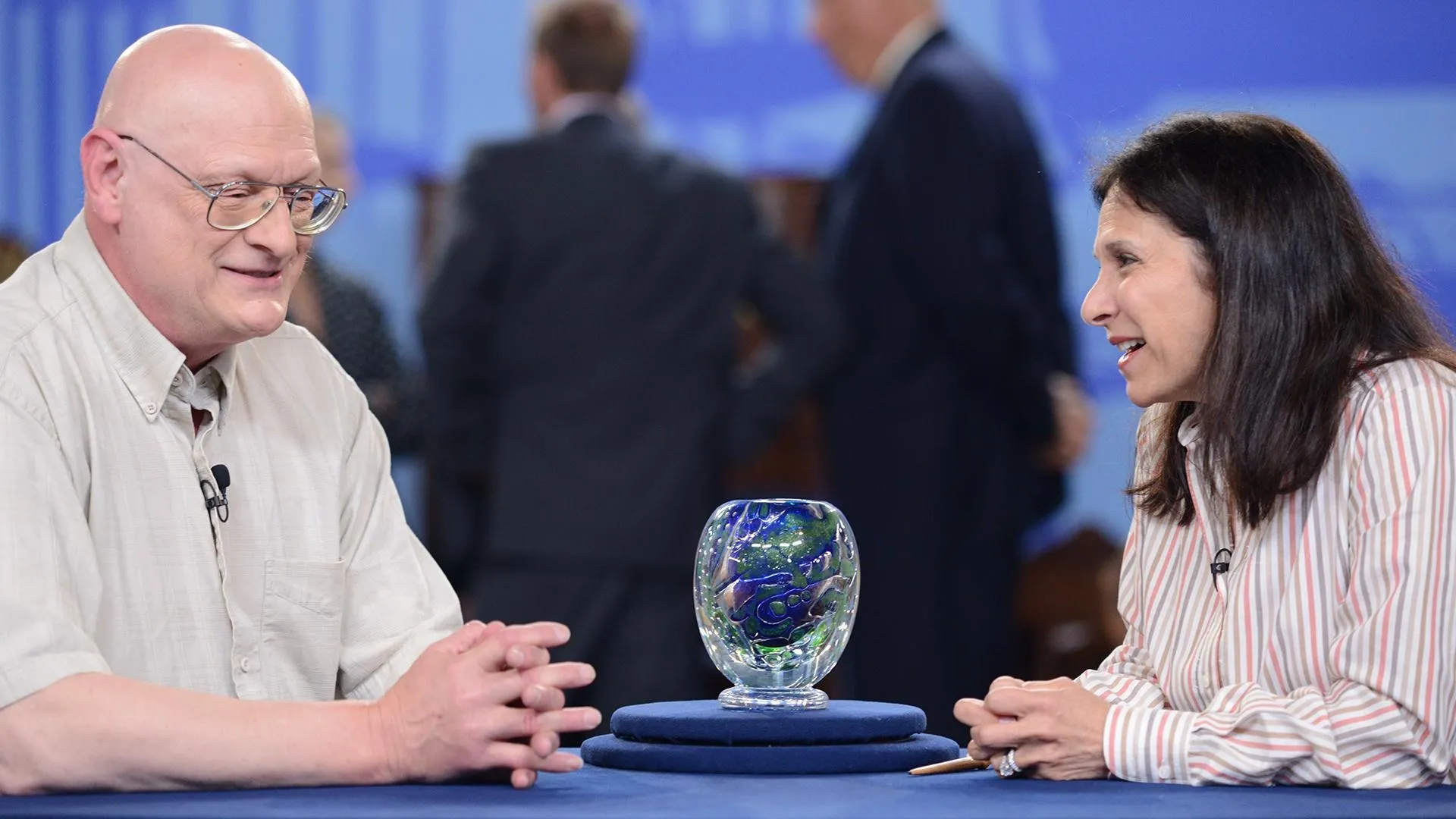HOST: There's something magical about the sound of a finely crafted guitar. The folks at Vintage Guitar magazine, headquartered in Bismarck, introduced us to a local man with a terrific collection of Larson Brothers guitars.
GUEST: I collect Larson Brothers guitars mainly because they got a unique tone like no other. There's just something about this guitar that it's just got it.
HOST: Appraiser Richard Johnston and I were lucky to get a look at a few of these timeless beauties. When we talk about vintage and classic guitars, we hear Gibson, we hear Martin all the time, but we rarely hear the name Larson. Tell me about the Larson brothers.
APPRAISER: Carl and August Larson were Swedish immigrants who started a business in Chicago in the late 1800s. They're kind of the unsung pioneers of the American guitar because they were the first builders-- at least on any scale-- to adapt the old traditional gut string flat top guitar and beef it up and make it withstand the tension of steel strings. The Larsons made guitars under a number of different trade names, Stahl, Maurer, Prairie State, Euphonon, Stetson, but as far as we know, they never made anything under their own name. This is a harp guitar with six sub-bass strings. It was made by the Larsons, but it was marketed by W.J. Dyer and Brother out of Saint Paul, Minnesota. The big, hollow arm and the sub-bass strings produce a very sonorous, mellow kind of tone that was perfect to offset the very treble-oriented tone of most mandolin ensembles.
HOST: Can we hear some of it?
APPRAISER: Sure. (playing low notes)
HOST: It sure would round out the sound of all those mandolins, wouldn't it?
APPRAISER: (chuckling): It would help.
HOST: What year do you think this was made?
APPRAISER: This was made around 1914.
HOST: Tell me what the value of a harp guitar like this would be.
APPRAISER: Well, the value of these has come down a little bit in recent years because there's now new harp guitars very much like this that are easier to tune and are pretty good. But still, one like this is going to be about $5,500 retail.
HOST: We have another beautiful Larson guitar, and it's more of a traditional steel string guitar, except I don't know if I've ever seen one quite this big. Tell me about this.
APPRAISER: Well, the reason you haven't seen one this big is because there aren't very many this big. It's almost 19 inches across. It was made in the late '30s around 1940, which is close to the end of the Larson brothers' career. It was marketed under the Prairie State trade name. Today we call this a super jumbo. We don't know how the Larsons described it at the time. But it is one of the largest flat top guitars known. Next to it is a guitar from about ten years earlier, and that's a standard size guitar of the era. The Larsons took out a number of patents on their improvements to strengthen guitars, and this guitar has two of them, one of which you can see, which is the steel bar, which would help keep the body stable under all that string tension. The other you can't see, which is the braces that support the top were laminated. There was a hardwood layer sandwiched between two outer layers of spruce that made the top bracing a lot stiffer so that it would withstand all that tension. And this one's going to cost you $22,000, $25,000 retail.
HOST: Really great to hear the story behind the Larson brothers and the unsung heroes of these steel string guitars. Thanks so much for sharing.
APPRAISER: You're welcome.











